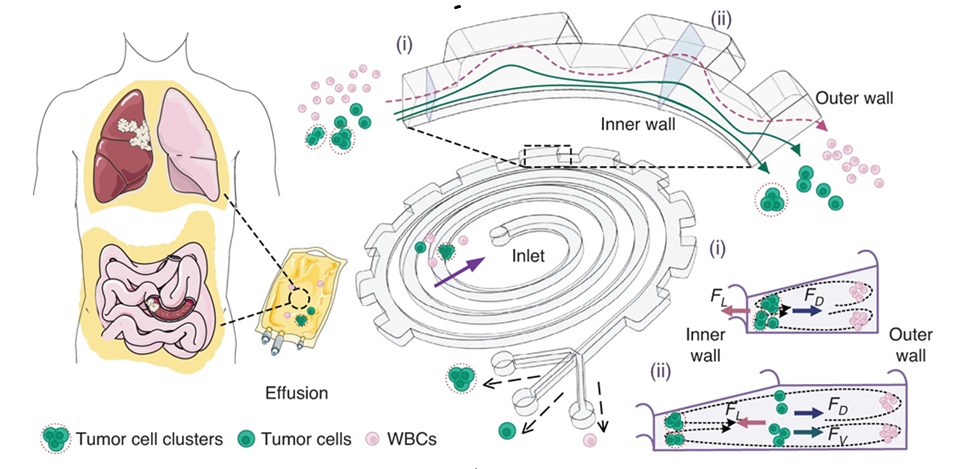Microfluidic Device for Cancer Detection Precisely Separates Tumor Entities
Posted on 15 Apr 2024
Tumor cell clusters are increasingly recognized as crucial in cancer pathophysiology, with growing evidence of their increased resistance to treatment and higher metastatic potential compared to single tumor cells. However, traditional cell separation techniques, which typically focus on isolating single tumor cells, are inadequate for simultaneously purifying tumor cell clusters. In response, researchers have developed a microfluidic method capable of high-throughput, continuous-flow ternary separation of single tumor cells, tumor cell clusters, and white blood cells (WBCs) from clinical samples of pleural or abdominal effusions. This technique incorporates slanted spiral channels and periodic contraction-expansion arrays to achieve separation.
The novel spiral-contraction-expansion device developed by researchers from Southeast University (Nanjing, China) utilizes slanted spiral channels combined with periodic contraction-expansion arrays for high-throughput, continuous-flow ternary separation of tumor cells and tumor cell clusters from a background of blood cells. By introducing periodic contraction-expansion arrays, the spiral-contraction-expansion device allows for the size-based ternary separation of cells under the combined action of the inertial lift force, Dean drag force, and local vortex-induced lift force. The researchers first characterized the ternary inertial focusing of differently sized particles in their spiral-contraction-expansion device and optimized the operational flow rate.

Subsequent evaluation was conducted of the device’s separation performance, recovery ratio, and purity of the tumor cells and clusters. The researchers also examined the device’s ability to carry out ternary separation of exfoliated tumor cells, tumor cell clusters, and WBCs from clinical pleural or abdominal effusions derived from cancer patients. The spiral-contraction-expansion device provides numerous benefits, including label-free, continuous-flow, high-throughput separation of tumor cells and clusters from cancer patient effusions in a single step. This method offers significant potential for enhancing the diagnosis and monitoring of treatment in cancer patients by analyzing malignant effusions with higher precision and efficiency.
Related Links:
Southeast University







 Analyzer.jpg)






